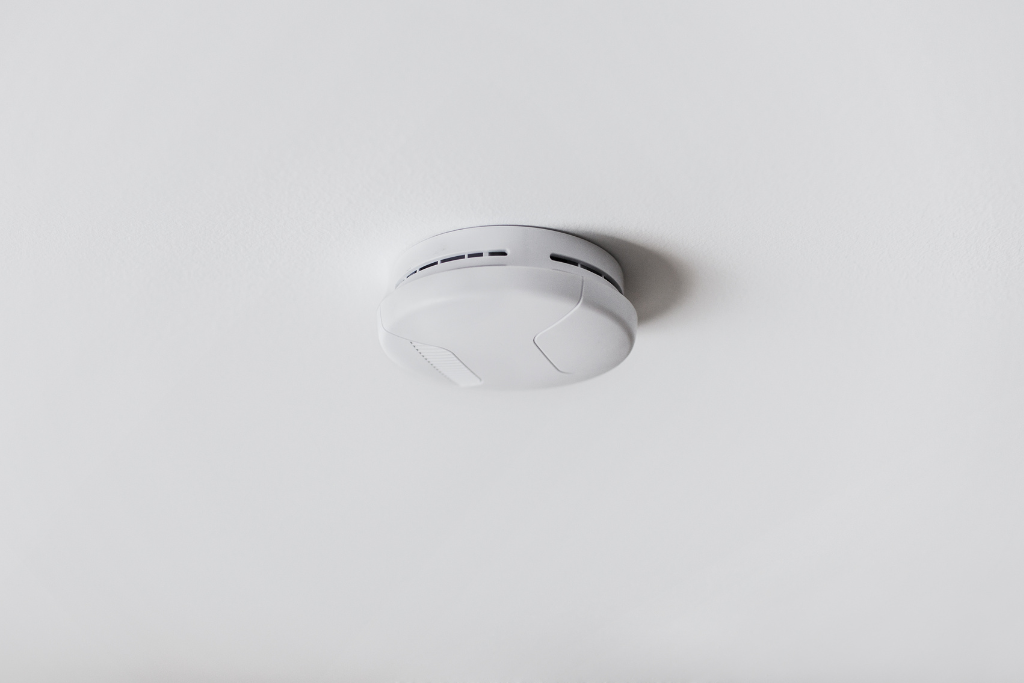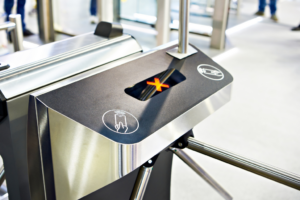Sensors Available for Alarm Systems: Comprehensive Guide

Security system sensors, including detector, wire the house and alert to potential threats, are the cornerstone of a reliable alarm system, playing a critical role in safeguarding homes. These house detectors are designed to alert and respond to various threats, forming an essential part of any home security setup. However, there are some cons to consider. From home systems like window alarm sensors to fire alarms, each sensor contributes to the overall functionality of the alarm system, providing both pros and cons.
These sensors help alert homeowners to potential dangers. Understanding the different types of security system sensors available for alarm systems is crucial for homeowners and residents looking to enhance their home security. However, it’s important to weigh the pros and cons before making a decision. By exploring the diverse range of alarm sensors and their specific functionalities, individuals can make informed decisions about choosing the most suitable options for their home alarm systems. This blog post delves into the intricacies of various security system sensors, providing valuable insights into creating a robust and effective home security setup.
Overview of Home Security Sensors
Home security sensors are essential for early threat detection and provide homeowners with peace of mind. They come in various types and technologies, such as window alarm sensors, contact sensors, proximity sensors, and hardwired sensors, each offering unique benefits to enhance the security of home systems.
Types of Home Security Sensors
- Motion Sensors: These sensors detect movement within their field of view, triggering the alarm system when unexpected motion is detected. They are ideal for monitoring large areas such as living rooms and hallways, providing an added layer of protection against intruders with hardwired sensors, alarm sensors, motion sensors, and a residential security system.
- Residential security system Door and Window Sensors: Designed to alert homeowners when doors or windows are opened, these sensors are crucial for preventing unauthorized entry. They consist of two parts – a magnet and a switch – which form a closed circuit when the door or window is closed. Additionally, a motion sensor can be integrated into the residential security system. Once the circuit is broken, the alarm is activated.
- Glass Break Sensors: These sensors use acoustic detection technology to identify the sound frequency produced by shattering glass. This quick response to potential break-ins makes them valuable additions to any home security system, especially for ground-level windows or glass doors.
- Smoke and Carbon Monoxide Detectors: While not directly related to intrusion detection, these sensors are vital for safeguarding against environmental hazards in the home. They provide early warnings about smoke or high levels of carbon monoxide, allowing residents to evacuate promptly and seek help if necessary.
Technologies Used in Home Security Sensors
- Wired Sensors: These sensors are physically connected to the central control panel using wires. While reliable, they require professional installation due to wiring complexities.
- Wireless Sensors: Operating on batteries or power from an electrical outlet, wireless sensors communicate with the control panel using radio frequency signals. They offer easy installation without drilling holes or running wires throughout the house.
- Smart Home Integration: With advancements in technology, many home security sensors now integrate seamlessly with smart home systems. This allows homeowners to monitor their security status remotely through smartphone apps and receive real-time alerts about any unusual activity at home.
Benefits of Home Security Sensors
- Early Threat Detection: By promptly detecting unauthorized entry or environmental hazards, home security sensors enable swift responses that can mitigate potential dangers.
- Peace of Mind: Knowing that their homes are equipped with reliable security measures provides homeowners with peace of mind whether they are at home or away.
- Customizable Options: With a wide range of sensor types and technologies available, homeowners can customize their security systems based on their specific needs and preferences.
Types of Sensors for Comprehensive Security
Different sensor types cater to diverse security needs. Sensors cover intrusion, environmental hazards, and more. Comprehensive security requires a range of sensor types.
Intrusion Detection
Intrusion detection sensors are essential for safeguarding homes and businesses against unauthorized entry. These sensors include door and window contacts, motion detectors, glass break detectors, and shock sensors. Door and window contacts trigger an alarm when the door or window is opened, while motion detectors sense movement within an area.
Environmental Hazard Monitoring
Environmental hazard sensors protect properties from dangers such as fire, carbon monoxide, and water damage. Smoke detectors are crucial for early fire detection, alerting occupants to smoke in the event of a fire. Carbon monoxide detectors monitor carbon monoxide levels to prevent poisoning. Water sensors detect leaks or flooding in basements or other vulnerable areas.
Surveillance Cameras
Surveillance cameras play a pivotal role in comprehensive security systems by providing visual monitoring of both indoor and outdoor spaces. They act as a deterrent to potential intruders while also capturing footage that can be used for investigations in the event of a security breach. Modern surveillance cameras often feature advanced capabilities such as night vision, motion detection, and two-way audio communication.
Environmental Controls
Some advanced security systems incorporate environmental controls that enable homeowners to remotely manage thermostats, lighting, and other home automation devices through their security system’s app or web interface. This not only enhances convenience but also contributes to energy savings by allowing users to regulate their home’s energy consumption even when away from home.
Personal Safety Devices
Personal safety devices are designed to provide individuals with immediate assistance during emergencies. These may include panic buttons or wearable devices equipped with GPS tracking capabilities that allow users to quickly signal for help if they feel threatened or encounter a medical emergency.
Perimeter Protection
Perimeter protection sensors secure the outer boundaries of properties by detecting any unauthorized access attempts before intruders can breach the premises. These sensors include outdoor motion detectors, gate contacts, fence vibration sensors, and infrared beam sensors that create an invisible barrier around the property perimeter.
By incorporating these various sensor types into a comprehensive security system, homeowners and businesses can ensure robust protection against diverse threats ranging from intrusion attempts to environmental hazards.
Motion Sensors: Active and Passive Technologies
Motion sensors are crucial components of alarm systems, detecting movement within a designated area. Active and passive technologies offer different detection methods, both effectively contributing to comprehensive security measures.
Active Technology
Active technology motion sensors emit energy (such as microwave radiation, ultrasonic waves, or infrared light) into the environment and detect any changes in the field when an object moves within it. These sensors are proficient at detecting motion across various environmental conditions and are commonly used outdoors due to their ability to cover large areas.
Passive Technology
Passive technology motion sensors detect infrared energy emitted by or reflected from objects in their field of view. The most common type is the passive infrared (PIR) sensor, which identifies variations in heat signatures within its detection range. These sensors are ideal for indoor use and are highly effective in detecting human intruders while minimizing false alarms caused by pets or other small animals.
Effectiveness for Detecting Unauthorized Activity
Motion sensors play a pivotal role in detecting unauthorized activity within a secured area. By promptly identifying any movement, these sensors trigger alarms that alert homeowners or security personnel, providing an immediate response to potential threats. They contribute to reducing false alarms by differentiating between authorized movements (like pets) and suspicious activities.
Application in Security Systems
Motion sensors are extensively utilized in home security systems as well as commercial and industrial settings. In residential applications, they provide an added layer of protection by monitoring entry points like doors and windows. Moreover, businesses utilize these sensors to safeguard valuable assets and ensure the safety of employees by promptly identifying any unauthorized access or movement during non-operational hours.
Integration with Smart Home Technology
With advancements in smart home technology, motion sensors have become integral components of automated lighting systems and surveillance cameras. They enable energy-efficient lighting control by activating lights only when motion is detected, enhancing convenience while conserving electricity. Furthermore, integrated with surveillance cameras, these sensors facilitate real-time monitoring of unexpected movements around the property.
Glass Break Detectors and Their Importance
Glass break detectors are essential components of alarm systems as they sense the sound frequency of breaking glass, providing an added layer of protection against forced entry. Homes with large windows or glass doors greatly benefit from the security these sensors offer.
Sensing Sound Frequency
Glass break detectors operate by sensing the distinct sound frequency produced when glass shatters. Upon detecting this specific acoustic signature, the sensor triggers the alarm system, alerting homeowners and deterring potential intruders.
Added Layer of Protection
By incorporating glass break detectors into an alarm system, homeowners can bolster their security measures. These detectors act as a crucial line of defense against forced entry through windows or glass doors, offering peace of mind and enhanced protection for both property and occupants.
Essential for Homes with Large Windows or Glass Doors
Properties featuring extensive use of glass in their architectural design require specialized security measures. Glass break detectors are particularly vital for homes with expansive windows or glass doors, as these areas are commonly targeted entry points for burglars. Implementing these sensors ensures comprehensive security coverage for such vulnerable areas.
Environmental and Hazard Detection Sensors
Environmental sensors are crucial components of alarm systems, monitoring for smoke, fire, or carbon monoxide. These sensors play a vital role in safeguarding homes against potential dangers, providing early detection of life-threatening situations.
Smoke and Fire Detection
Smoke detectors are essential environmental sensors that detect the presence of smoke particles in the air. When smoke is detected, these sensors trigger the alarm system, alerting occupants to the potential fire hazard. By promptly detecting smoke, these sensors enable quick response and evacuation in case of a fire emergency.
Carbon Monoxide Monitoring
Carbon monoxide (CO) detectors are designed to identify the presence of this odorless and colorless gas within a home. CO is produced by fuel-burning appliances such as furnaces, stoves, and water heaters. Early detection of elevated CO levels is critical as it can prevent carbon monoxide poisoning, which can be fatal if left undetected.
Heat Detection
Heat detectors serve as an additional layer of protection in areas where traditional smoke detectors may not be suitable due to high dust levels or humidity. These sensors activate when they sense a rapid rise in temperature, indicating a potential fire outbreak. They are particularly useful in environments where smoke detection alone may not provide adequate coverage.
Temperature Sensors
Temperature sensors contribute to environmental monitoring by detecting extreme fluctuations in temperature that could indicate potential hazards such as overheating equipment or malfunctioning appliances. By identifying abnormal temperature changes, these sensors help prevent fire incidents caused by electrical faults or overheating devices.
Importance of Environmental Sensors
Environmental and hazard detection sensors are integral to ensuring comprehensive protection within homes and commercial spaces. They provide an added layer of security by detecting threats that may not be immediately visible but pose significant risks to occupants’ safety.
By incorporating environmental sensors into alarm systems, homeowners can mitigate the impact of unforeseen events such as fires or gas leaks. These sensors offer peace of mind by continuously monitoring for potential dangers even when occupants are away from the premises.
Entry Point Monitoring with Door and Window Sensors
Door and window sensors are essential components of any home security system. They play a crucial role in alerting homeowners to unauthorized entry, making them fundamental for securing vulnerable entry points.
Alerting Homeowners
These sensors provide real-time alerts to homeowners when doors or windows are opened without authorization. This immediate notification allows for swift action to be taken, such as contacting authorities or verifying the entry with the monitoring center.
Fundamental Components
Door and window sensors serve as the foundation of an effective alarm system. By detecting intrusions through these primary entry points, they act as the first line of defense against potential intruders. This foundational role underscores their significance in safeguarding homes and providing peace of mind to residents.
Securing Vulnerable Entry Points
Vulnerable entry points, such as ground-level windows or secluded doors, require specific attention. Window sensors, along with door sensors, address these vulnerabilities by offering comprehensive coverage and protection against potential break-ins.
By leveraging window contacts in addition to door sensors, homeowners can ensure that all possible entry points are monitored effectively. This comprehensive approach maximizes security coverage and minimizes blind spots within the home’s perimeter.
Specialty Sensors for Enhanced Security Measures
Specialty sensors, including vibration, pressure, and shock sensors, offer advanced security features ideal for high-security applications or specific threats. These advanced sensors are designed to provide specialized security measures beyond traditional door and window sensors.
Vibration Sensors
Vibration sensors are designed to detect any unauthorized attempts to tamper with doors, windows, or other access points. They are particularly effective in detecting forced entry through methods such as drilling or cutting. When vibrations beyond a certain threshold are detected, the sensor triggers the alarm system, alerting the residents and deterring potential intruders.
Pressure Sensors
Pressure sensors are capable of detecting changes in pressure within a specific area. These sensors can be installed under carpets or doormats and trigger an alarm when pressure is applied to them. This makes them a valuable addition to residential security systems as they can detect an intruder’s presence before they even attempt to gain access through doors or windows.
Shock Sensors
Shock sensors are designed to detect physical impact or shock waves caused by attempted forced entry or vandalism. They can be installed on windows, doors, and even walls to detect any attempts at breaching the property. Once triggered, these sensors immediately send signals to the security system, prompting appropriate action.
These specialty sensors add an extra layer of protection to a property by providing early detection of potential security breaches that may not be picked up by standard door and window sensors alone. By incorporating these advanced sensors into their security systems, homeowners can significantly enhance their safety and protection against break-ins and other threats.
Understanding Wired vs. Wireless Alarm Systems
Wired Systems
Wired alarm systems connect sensors directly to a central control panel using physical wiring. This type of system ensures a stable and reliable connection between the sensors and the control panel.
In a wired system, each sensor is physically connected to the control panel through wires, providing a consistent flow of information without any potential interference from other devices or signals. This direct connection makes wired systems less susceptible to signal disruptions or hacking attempts.
Wireless Systems
Wireless alarm systems utilize radio frequencies to communicate between devices, including sensors and the control panel. These systems offer flexibility in sensor placement as they do not rely on physical wiring for connectivity.
With wireless systems, installation becomes more convenient and less invasive since there are no wires to conceal or route through walls. Wireless systems can be easily expanded by adding new sensors without the need for extensive rewiring.
Advantages of Wired and Wireless Systems
Both wired and wireless alarm systems have their own set of advantages. Wired systems are known for their reliability due to the direct physical connections, making them less prone to signal interference or hacking. On the other hand, wireless systems offer flexibility in installation and expansion, making them suitable for retrofitting existing structures or areas where running wires is challenging.
Wired systems have an edge as they are not susceptible to signal disruptions caused by electronic devices or environmental factors like heavy rain or snow. However, wireless systems provide convenience during installation and allow for easy relocation of sensors if needed.
In terms of security, both types of alarm systems are effective when installed correctly with appropriate security measures in place. While wired systems may be perceived as more secure due to their physical connections, advanced encryption protocols in wireless systems also provide robust security against unauthorized access.
It’s essential for individuals considering an alarm system to weigh these factors based on their specific needs and preferences before making a decision about which type of system best suits their requirements.
Choosing the Right Sensor for Your Security Needs
Consider Specific Security Requirements
When selecting sensors for your alarm system, it’s crucial to consider the specific security requirements of your property. For instance, if you live in an area prone to break-ins, you might prioritize motion sensors or glass-break detectors. Conversely, if fire is a significant concern, smoke and heat detectors are essential.
Choose Sensors Aligned with Lifestyle and Threats
It’s important to choose sensors that align with your lifestyle and potential threats. If you have pets, pet-immune motion sensors can prevent false alarms. If you travel frequently, integrating smart sensors that offer remote monitoring and control through a mobile app can provide peace of mind.
Consult Professionals for Suitable Sensors
Consulting with security professionals can help determine the most suitable sensors for your needs. They can assess your property and provide expert recommendations based on factors such as layout, vulnerabilities, and potential blind spots. Professional advice ensures that you make informed decisions regarding sensor placement and type.
By considering these key points when choosing sensors for your alarm system, you can enhance the overall security of your property while addressing specific concerns effectively.
Conclusion
In conclusion, the selection of alarm system sensors plays a crucial role in safeguarding homes and properties. Understanding the diverse range of sensors, from motion detectors to environmental hazard monitors, is essential for comprehensive security measures. By evaluating the specific security needs and considering factors such as technology, placement, and connectivity, individuals can make informed decisions when choosing the most suitable sensors for their alarm systems.
For a robust security setup, it is imperative to assess the unique requirements of each property and explore the options available in the market. By staying informed about the latest advancements in sensor technology and seeking professional advice when needed, individuals can enhance their home security effectively.





